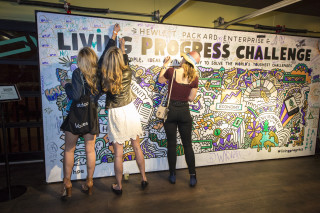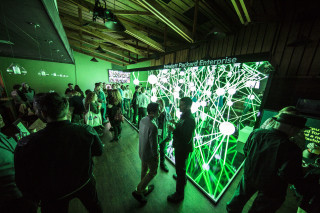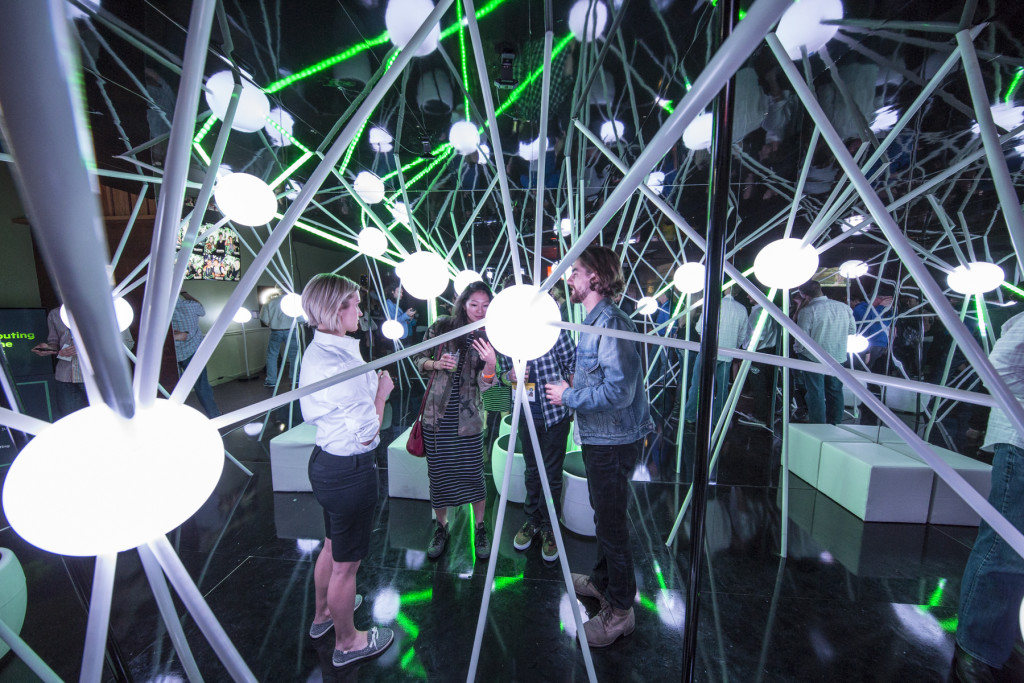The recently separated computing company Hewlett Packard Enterprise has been enjoying its day in the sun ever since it became its own entity late last year.
Formerly known as Hewlett-Packard, the company ceased to be last November when it split into HP Inc. and HPE—HPE now focuses on a product portfolio featuring infrastructure, security, big data and workplace productivity solutions—all of which totals $53 billion in annual revenue.
HPE company stock increased by 33.6 percent in March, according to an inaugural quarterly report, per data provided by S&P Global Market Intelligence. The momentum carried into April as the Palo Alto, Calif.-based tech titan shored up capital and struck an $825 million deal to sell Blackstone Group a majority stake in Mphasis Ltd, an Indian IT services company, earlier this week.
According to the The Wall Street Journal, the sale “aligns with the company’s capital allocation priorities, which it has said include directing investments toward developing new products and services.”
[a]listdaily caught up with HPE to discuss how the company is redefining the future of computing with “The Machine” and accelerating progress with the Living Progress Challenge.

Where is HPE guiding the future of data? How will it be sharing information, and closing the digital divide and solving the data deluge?
Moore’s Law is running out of steam. As a result, the computing architectures that have handled the world’s data needs for the past 70 years will not be able to support a future of energy scarcity and data abundance. The public cloud already consumes as much energy as the airline industry, and worldwide data volumes are expected to double every two years for the foreseeable future. We need new computing technology that will help us store and analyze these oceans of data. HPE is building a new kind of computing infrastructure called The Machine. It’s a radically new design that collapses memory and storage, transmits data using light instead of electrons, and consumes a fraction of the energy used by conventional computers. This technology will help us solve the data deluge, close the digital divide and solve many other pressing challenges that society faces.
—Richard Murphy, editor in chief, HPE
The Living Progress Challenge asks people to answer the following question: “What software applications and digital services would you create to improve people’s lives?” to improve lives by 2020. How has it progressed since it first launched?
The Challenge has received over 370 ideas and 130 proposals from organizations and individuals from around the world, telling HPE how they would use technology to improve lives. The proposals are diverse and innovative, and HPE is currently reviewing them and will be selecting up to 20 first-round winners by May 2.
Some examples of the proposals we have received include: a tablet application that helps new mothers in developing countries ensure their babies receive appropriate vaccines on schedule, an application to improve the business continuity of small- and medium-sized businesses struck by natural disaster, and a mobile app to help disabled youth and adults gain life skills and confidence to pursue independent living.
From the first round of up to 20 winners, up to five will be ultimately selected to be built and deployed in regions around the world to positively impact lives.
—Shari King, HPE Living Progress

Influencer marketing has grown to be a strong alternative for storytelling versus traditional ads. Are influencers—like Julian Smith— on your radar as a means to leverage “power of suggestion” from a trusted source?
Events like SXSW and Sundance Film Festival provide a stage for us to introduce the new HPE brand. The power of leveraging influencers makes the spotlight even brighter. Influencer content gives us a whole new lens through which we tell our story. It’s important to us that our influencers are also brand advocates—that they believe in the brand and what we stand for. That relationship makes the content more authentic and the partnership more trustworthy.
—Kelsey Carroll, global marketing and social media, HPE
What was your biggest takeaway from the “Fast Company Grill” at SXSW? How did HPE explain the meaning of “The Machine,” the company’s new research initiative to transform the future of computing?
The Fast Company Grill gave us a way to demonstrate, through partnership, the leaders that we are in the enterprise technology space. We created a fun and interactive visual representation of distributed mesh computing which The Machine will ultimately enable at scale.
—Chris Drago, director of global media, HPE

